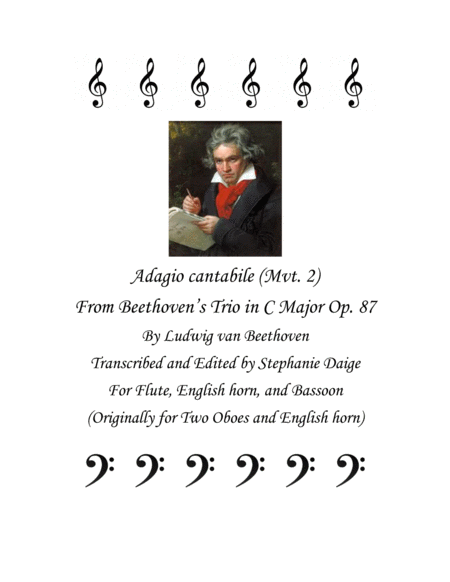Woodwind Ensemble,Woodwind Trio Bassoon,English Horn,Flute - Level 3 - Digital Download SKU: A0.796880 Composed by Ludwig van Beethoven. Arranged by Stephanie Daige. Concert,Standards,Wedding. 15 pages. Stephanie Daige #3508465. Published by Stephanie Daige (A0.796880). The Trio in C Major, Op. 87 for Two Oboes and English horn is one of Beethoven’s greatest pieces of chamber music for wind instruments. Experienced oboists are sure to be familiar with this work, and likely have studied it and performed it many times. Beethoven wrote so beautifully and brilliantly for woodwinds, and I wish he had written more chamber music for winds! Audiences always love to hear this piece performed, and I never tire of performing or teaching it. Now, with my transcription for oboe, English horn, and bassoon, you can invite a flutist and a bassoonist friend to join in the fun! This Adagio cantabile movement (the second of four movements) is beautiful, soulful, and melodious. It is enjoyable to play and to listen to, suitable for advanced students or professionals. Students will learn so much about phrasing, articulation, dynamics, balance, and expression from studying this piece; and the level of musicality in this work is suitable for a professional performance. It would work well in a chamber music recital or student recital, and is a good length and seriousness for church offertory music. Duration is approximately 4.5 minutes. Thank you for considering purchasing my arrangement! I hope you will enjoy playing it as much as I have enjoyed arranging it. Please check out my other arrangements on Sheet Music Plus. .
